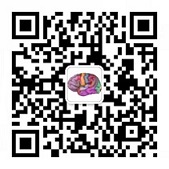Lennox-Gastaut Syndrome
Etiologies: Structural brain abnormalities (about 70%, abnormal development or acquired) and mutations of some genes (such as CHD2、SCN2A、SCN1A、SCN8A、KCNB1、GRIN2B、ALG13、GABRB3、STXBP1、DNM1、FOXG1、MECP2、CACNA1A、CDKL5、FLNA、FGF13、ADSL、IQSEC1、iQSEC2、KCNQ3、MTOR, MBD5、SETD1Betc.) [1-10, 15-16].
Age of onset: onset of seizures generally from age 1 to 7 years (peak 3 to 5 years).
Seizure characteristics: Around 10 - 30% of Lennox Gastaut syndrome evolve from Infantile Epileptic Spasms Syndrome, Ohtahara Syndrome and other epileptic encephalopathy. There are often a variety of seizure types. The most common are tonic seizures (the most characteristic seizure, some mild tonic seizures show only mild involvement of the trunk or shoulders, or a tense expression caused by transient facial muscle rigidity, or bilateral corner of the mouth downward due to the contraction of orbicularis oris muscle, and some only show the eyes look up), atypical absence seizures and atonic seizures. Myoclonic seizures, generalized tonic clonic seizures, focal seizures and non convulsive status epilepticus may also be present [11-12].
EEG: Background: most basic brain wave rhythms slow down (with generalized or focal slowing). Interictal: some can be manifested as: 1. generalized slow (< 2.5hz) spike slow wave; 2. Paroxysmal fast (spike) activity; 3. Focal or multifocal sharp (spike) slow wave (with an anterior predominance). Ictal: generalized voltage attenuation with recruitment rhythm (tonic seizures), generalized spike slow wave burst (atypical absence), generalized (multiple) spike slow wave or voltage attenuation (atonic seizures), generalized (multiple) spike slow wave (myoclonic seizures) [11-13].
Brain MRI: Some may have structural brain abnormalities (depending on the etiology).
Developmental progress: Mostly development is backward.
Treatment:
National Institute for health and Clinical Excellence (NICE) epilepsy guidelines 2022:
First-line treatment: valproate sodium.
Second-line treatment: lamotrigin (monotherapy or add-on).
Third-line treatment: 1. cannabidiol in combination with clobazam if the child is over 2 years, in line with NICE's technology appraisal guidance on cannabidiol with clobazam for treating seizures associated with Lennox–Gastaut syndrome; 2. clobazam; 3. rufinamide; 4. topiramate.
Further treatment options: ketogenic diet. If all other treatment options for Lennox–Gastaut syndrome are unsuccessful, consider felbamate as add-on treatment.
Be aware that the following drugs may exacerbate seizures: carbamazepine, gabapentin, lacosamide, lamotrigine, oxcarbazepine, phenobarbital, pregabalin, tiagabine, vigabatrin.
Chinese clinical diagnosis and treatment guidelines epilepsy volume 2015:
First line drugs: valproate.
Drugs that can be added: lamotrigin.
Other drugs that can be considered: topiramate, levetiracetam, rufinamide, felbamate.
Be aware that the following drugs may exacerbate seizures: carbamazepine, oxcarbazepine, gabapentin, pregabalin, tiagabine, vigabatrin.
2022 International League Against Epilepsy (ILAE) diagnostic criteria [14]:
Mandatory: Tonic seizures (In addition to tonic seizures, at least one additional seizure type must be present, which may include any of the following: Atypical absences, Atonic, Myoclonic, Focal impaired awareness, Generalized tonic–clonic, Nonconvulsive status epilepticus, Epileptic spasms). EEG show Generalized slow spike-and-wave complexes of <2.5 Hz (or history of this finding on prior EEG), generalized paroxysmal fast activity in sleep (or history of this finding on prior EEG); Age at onset <18 years; Drug-resistant epilepsy, mild to profound intellectual disability.
Alerts: EEG show photoparoxysmal response at low frequencies (suggests neuronal ceroid lipofuscinosis type 2 (CLN2) disease); Age at onset >8 years.
Exclusionary: EEG show persistent focal abnormalities without generalized spike-and-wave pattern.
Reference
- Zhou, P., et al., Novel mutations and phenotypes of epilepsy-associated genes in epileptic encephalopathies.Genes Brain Behav, 2018. 17(8): p. e12456.
- Wolff M., et al., Genetic and phenotypic heterogeneity suggest therapeutic implications in SCN2A-related disorders. Brain 140:1316-1336.
- McTague, A., et al., The genetic landscape of the epileptic encephalopathies of infancy and childhood. Lancet Neurol, 2016. 15(3): p. 304-16.
- Marini, C., et al., Clinical features and outcome of 6 new patients carrying de novo KCNB1 gene mutations. Neurol Genet, 2017. 3(6): p. e206.
- Shi, Y.W., et al., Synaptic clustering differences due to different GABRB3 mutations cause variable epilepsy syndromes. Brain, 2019. 142(10): p. 3028-3044.
- Stamberger, H., et al., STXBP1 encephalopathy: A neurodevelopmental disorder including epilepsy.Neurology, 2016. 86(10): p. 954-62.
- Mastrangelo, M., Lennox-Gastaut Syndrome: A State of the Art Review. Neuropediatrics, 2017. 48(3): p. 143-151.
- Bartholdi, D., et al., Clinical profiles of four patients with Rett syndrome carrying a novel exon 1 mutation or genomic rearrangement in the MECP2 gene.Clin Genet, 2006. 69(4): p. 319-26.
- Jiang, X., et al., Both gain-of-function and loss-of-function de novo CACNA1A mutations cause severe developmental epileptic encephalopathies in the spectrum of Lennox-Gastaut syndrome.Epilepsia, 2019. 60(9): p. 1881-1894.
- Choi, M.H., et al., A Novel X-Linked Variant of IQSEC2 is Associated with Lennox-Gastaut Syndrome and Mild Intellectual Disability in Three Generations of a Korean Family. Genet Test Mol Biomarkers, 2020. 24(1): p. 54-58.
- Panayiotopoulos. 癫痫综合征及临床治疗. 北京 : 人民卫生出版社, 2012.
- 刘晓燕. 临床脑电图学. 第2版. 北京 : 人民卫生出版社, 2017.
- 李世绰. 临床诊疗指南, 癫痫病分册. 第2版. 北京 : 人民卫生出版社, 2015.
- Specchio, N., et al., International League Against Epilepsy classification and definition of epilepsy syndromes with onset in childhood: Position paper by the ILAE Task Force on Nosology and Definitions. Epilepsia, 2022.
- Phenotypic Spectrum of Seizure Disorders in MBD5-Associated Neurodevelopmental Disorder. Neurol Genet. 2021 Mar 18;7(2):e579.
- SETD1B variants associated with absence seizures. Eur J Paediatr Neurol. 2025 Jan:54:68-74.

 English
English  简体中文
简体中文 